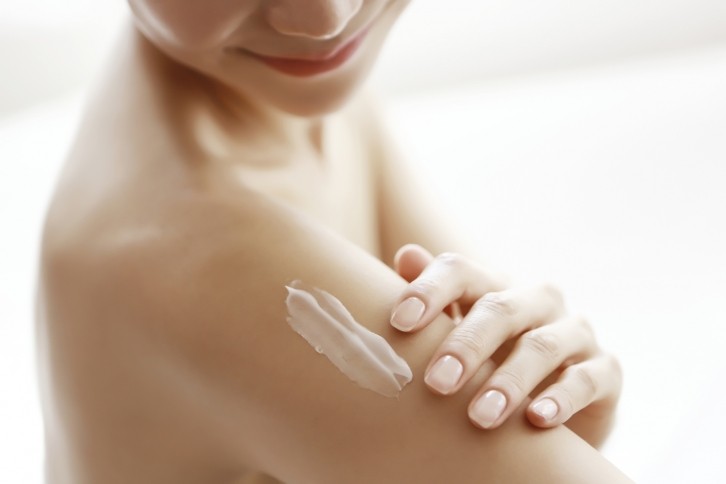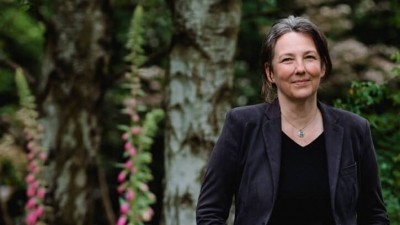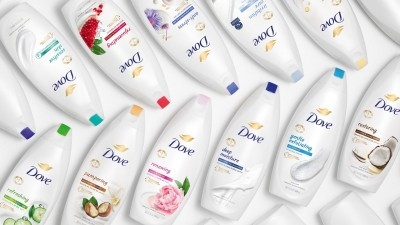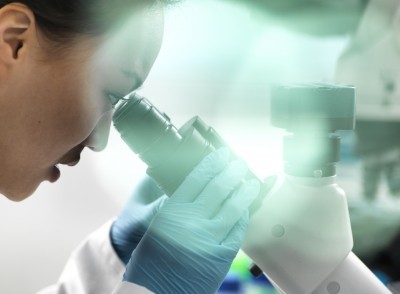The microbiome and skin care: Q&A with L'Oréal R&I expert

The microbiome is continuing to build momentum in the beauty and personal care industry that can reaching across multiple categories; beyond just facial skin care and ingestibles.
In late 2023, the French multinational L'Oréal acquired a Danish precision probiotics startup, Lactobio, and shared that this move would open up many new doors for NPD, including the opportunity to develop new topical skin care and hair care products based on live bacteria. Cosmetics Design-Europe spoke to deputy domain leader, advanced research at L'Oréal R&I, Dr Magali Moreau about what’s happening at the business in this sector.
You can also watch the full interview and more interviews with key industry experts by registering here.
Cosmetics Design-Europe (CDE): Can you tell us more about the rising interest in the microbiome in the cosmetic industry?
Dr Magali Moreau (MM): There is lot of interest in the microbiome, so I'd like to start with a reminder that the microbiome is an ecosystem of microorganisms living on the surface of our skin. It is composed of bacteria, but also yeast, fungi and viruses. It’s not a small part of our body because we are more microorganism than we are human. With more than fifty per cent of our cells, even more genes. For the skin, there is one million microorganisms per centimetre square. This is all intimately connected and in constant dialogue with our skin. It’s not a ‘bystander’ at the surface, it's really inside the invagination ‘talking’ with our skin.
So, it's really no wonder that there is a rising interest from the cosmetic industry because there is now evidence that it participates in the skin physiology. You can’t focus on the skin or the scalp if you ignore our ‘bacterial best friends’.
And I think what is really triggering this rising interest is that we understand now, without any doubt, that is an integral part of the skin barrier function that gives our skin the full protective function.
It is a very dynamic layer that will fend off pathogens, helps protect from external aggressors, teaches our immune system. All together the physical barrier, the microbe barrier is what makes our skin look healthy, and beautiful. And that’s why now is the right time.
CDE L'Oréal has recently acquired a precision probiotics startup company Lactobio. Where does this lead you and the beauty industry in general?
MM: Well, yes, this is an exciting time with the acquisition. The microbiome is not a new field of research for us; we've been working on it for many years because like I mentioned, it’s such a fundamental part of the skin barrier.
We also know the importance when this is disrupted and you then develop skin and scalp concerns. This is where we started, with scalp health, where we did many studies on dandruff and scalp health across multiple countries, highlighting the role of the microbial ecosystem – of course the yeast – but also the balance between the yeast and the bacteria on the scalp.
With this knowledge, we already used it for developing products for our La Roche Posay brand for eczema-prone skin and also to rebalance the skin microbiome. And then we have many interests in acne, pollution, ageing – you can see in our study publications – so I think with the acquisition of Lactobio it is really the right time to accelerate the opportunity for new product development.
Were combining our expertise, knowledge and product know-how with Lactobio’s specific probiotic expertise. They're using lactic acid bacteria, which are well known in the gut microbiome space to be safe and supporting gut health and wellbeing.
This acquisition really opens up new opportunities to strengthen our scientific leadership, but also to bring about products; safe, effective new cosmetics for skin and scalp health and I think the options are pretty broad.
CDE: What kind of challenges are there for cosmetics when it comes to working with the microbiome?
MM The main challenge that comes to mind for me is the knowledge gap about what we understand about the microbiome. And I want to turn it on its head. It's a challenge, but it's also the greatest opportunity for discoveries, because we are really at the beginning of understanding how far and wide this intimate connection between the microbiome in the skin can go in terms of benefit and function.
So, the challenge is really to harness that knowledge, to accelerate that knowledge, and make it into the next-generation products.
With Lactobio we're starting from more of a ‘known entity’, because the gut microbiome research is a little bit more advanced, and they have taken advantage of using these probiotics. So, I think we're starting from a space of great opportunity where we're going to use the same properties and expand what it's going to bring for the skin.
The other challenges I can foresee for me are twofold and more practical.
The first one would be on the regulatory standpoint, because microbiome ingredients don’t fit the boxes of what is historically defined as a ‘cosmetic’.
So, we're working with our industry partners and regulatory bodies to define what it is, so we speak the same language and the consumer knows what we're talking about to make the space for this new field.
And the last challenge, particularly when we're talking about the probiotics could be from the formulation standpoint. We have to think out of the box of what we typically do in terms of skin care formulation, because we're now dealing with ingredients and objects that will require specific formulation environments, so that you can preserve its benefits, keep it alive and express its full potential.
CDE: With the products you're working on now, what type of performance can we imagine? Will the microbiome be a gamechanger in the beauty industry?
MM: Well, I do believe it's a gamechanger in the beauty industry the same way we see the microbiome in the gut and health becoming a life changer for conditions that for which there is no answer.
Beautiful skin is first and foremost healthy skin and the same for a healthy scalp. And this is where the microbiome plays a huge part in terms of physiology, we can unlock solutions that are really going to benefit people with strong concerns.
We started with the Lipikar line at la Roche Posay, where we worked to increase microbial diversity in eczema-prone skin. We could measure the diversity of microbiome – as it’s measurable and quantifiable – and saw the benefits in terms of comfort and crisis management.
And then the most recent life-changing technology I'm also very happy about is the launch of the Lipikar Eczema MED. Because here we really took the potential of what we understood about the microbiome and we have an active that specifically targets one bacteria that is really linked to eczema-prone lesions, and we leave all the rest intact because we know their benefit. With this product, we see a rapid relief in the lesions and the discomfort, not only for adults but for children too, in a matter of days. When I hear feedback from the consumer and from the parents it's incredible. It’s really what I wanted to do – it's life changing and I'm so proud of that development. We did in collaboration with Micreos, a Dutch company, which also shows that partnering up and doing open innovation is the way to benefit from all of our expertise for product development and also for new technologies, to quickly bring about these life-changing products for consumers. So I can really see these benefits in skin quality increasing more in the upcoming years.
CDE: When L'Oréal acquired Lactobio, the press release mentioned ‘precision probiotics’. Does this mean we can expect increasingly personalised solutions in terms of microbiome beauty?
MM: I want to go back on the word ‘precision probiotic’ to really explain what I mean. I think the point we wanted to make is that not all bacteria are the same, of course. And so, we and the Lactobio team have selected specific bacteria for specific benefit, because they acquired the expertise; the knowledge about what those bacteria are doing what they're able to secrete, and it is really anchored in that knowledge.
The precision probiotic really means that we will select the right bacteria for the right skin benefit. So that's already what is important in terms of developing products. This means we can offer different products – like you said ‘personalisation’ for different concerns – even for a single person. The microbiome is actually many microbiome. The forehead microbiome is different to the drier skin on the legs. So even for a single individual, it is important to select the ingredient to modulate or to play with the microbiome of that specific area. For example, a bacterium that will work on the greasy forehead will not necessarily work or bring the benefit on the dryer other parts of the body because it will not thrive. It will not express the same molecule.
The microbiome can be part of the personalised beauty routine but it's not the only part. I think when we're trying to address personalisation in terms of beauty routine and skin care, we have to look more globally at what is the skin concern – who is the person what is their lifestyle, what is their age, gender, all of this – and the microbiome, which adds an extra piece of personalisation. However, to be really at the stage of using the microbiome as a key piece of personalisation, we need more data.
Discovery in the research is only at the beginning. We need more data that we don't yet have on the skin microbiome, to really make that connection between skin features and the microbiome and how we can change it or adapt it to make true personal care.
For this, we are launching citizen science initiatives with the Centre of Microbiome Innovation at UC San Diego, where we're going to call on volunteers in the US to provide skin samples for microbiome deep sequencing, together with careful collection of data on lifestyle, skin concerns, measurement of skin ageing features, to really put all the parameters and get us closer to a personal product. So that's also very exciting.
CDE: Do you expect that younger consumers will more readily adopt microbiome-related products into their beauty and personal care regimes, or is there some educational work to be done there?
MM: I'm very confident because I think the next generation of consumer first will want the same thing as my generation in terms of efficacy and safety for their personal care routines. But they also have the advantage to be born at the time where there is more knowledge, more education, so they can embrace the added benefit of considering the microbiome in skin care or scalp care product design.
They may not have as many questions in terms of wondering why are we considering the microbe on our skin, because it's going to be very evident. So, I'm confident that they will embrace this as a way to bring about efficient and targeted solution for their skin care needs.
CDE: Anything else to add on this topic?
MM: I want to mention our very exciting discovery that we just published in early January, which really linked the microbiome with skin ageing signs.
Together with our collaborator on the Centre of Microbiome Innovation at University of San Diego, we mined our rich data set on microbiome and clinical ageing signs of about 650 women.
This is something that we've been wanting to do for a long time. We were the first ones to show the change of microbiome with skin chronological age, but we wanted to take it one step further. We know that we change and that our skin changes with age and we also know that some people have younger or older looking skin for the same biological age. So here with this data we could tease it apart to separate the microbes that are specifically associated with stronger ageing signs – like crow's feet wrinkles or trans-epidermal water loss (TEWL) – and separate that from chronological age.
I think this really opens new opportunities to balance the microbiome. Not just to avoid concern and discomfort and healthier skin, but also prolong youthful skin. So, I think this is a very promising new field for our industry.






















